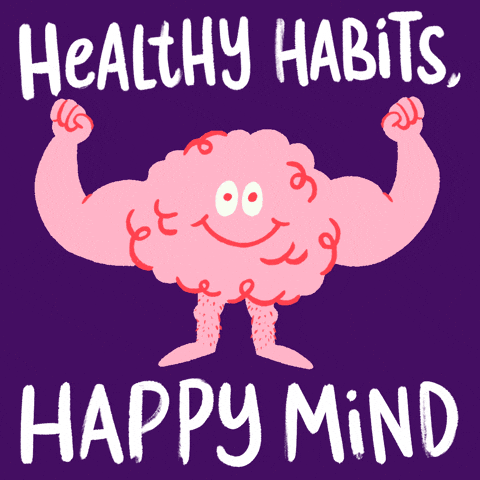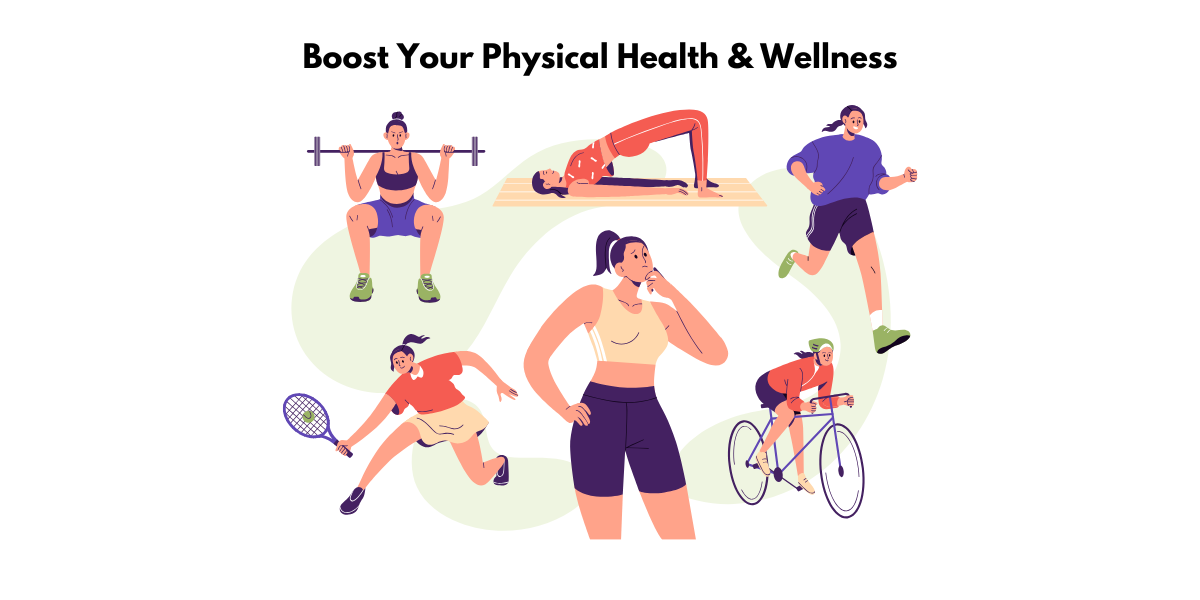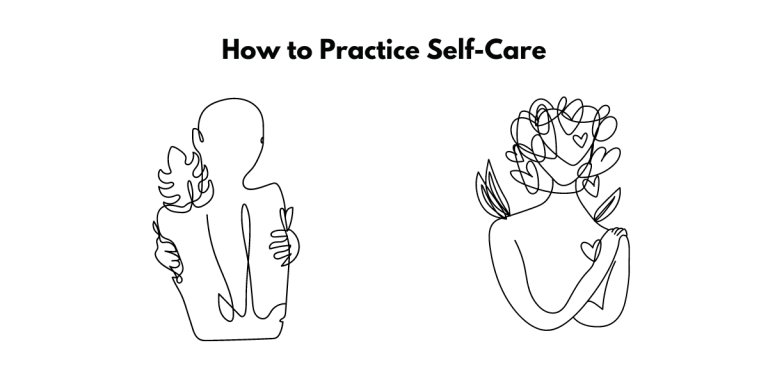Maximize Physical Health & Wellness: A Quickstart Guide
Introduction to Physical Health and Wellness
Understanding the Pillars of Physical Well-Being
Physical well-being rests on several key pillars that support your overall health and quality of life. These include regular exercise, balanced nutrition, sufficient sleep, responsible sexual health practices, and mindful substance use. To prioritize physical wellness, the importance of regular healthcare navigation must also be considered to prevent illness and manage existing conditions effectively. Remember, your body’s wellness needs doesn’t only arise when you’re sick; it’s an ongoing commitment to self-care.
Why a Healthy Body Equals a Happier Life
Having a healthy body often translates to enjoying a happier life. Physical activity releases biochemicals that can significantly boost your mood, confidence, and self-esteem. This positive mental state then feeds back into your physical health, creating a virtuous cycle. By investing in your physical health, you’re more likely to experience increases in energy, productivity, and mental clarity, and decreases in the risks of chronic diseases like heart disease and cancer. Think of your body as a well-oiled machine—with proper care and maintenance, it runs smoothly and efficiently, allowing you to live life to the fullest.

Building the Foundation: Core Strategies for Improvement
Get Active: Minimum Recommendations for Exercise
To maintain and improve your physical health, aim for at least 150 minutes of moderate-intensity aerobic activity or 75 minutes of vigorous-intensity activity per week, according to Australia’s physical activity guidelines. You could also choose an equivalent mix of moderate and vigorous activities. Additionally, incorporating muscle-strengthening exercises at least twice a week is key to building and maintaining strong muscles and bones.
Remember, these are just minimum recommendations. Feel free to exceed these numbers for even greater health benefits. Getting started can be as simple as walking more and taking the stairs instead of the elevator. Every bit counts, so start with what you’re comfortable with and gradually increase the intensity and duration as your strength and stamina improve.
Eat Smart: Tips for Nutritional Success
Eating smart is about making enlightened choices that not only satisfy your hunger but also nourish your body. To achieve nutritional success, aim for a colorful plate filled with a variety of vegetables, fruits, whole grains, lean proteins, and healthy fats. Embrace whole, unprocessed foods that are rich in essential nutrients. Always check the Nutrition Facts label to make informed decisions about packaged foods, focusing on those with less added sugars, lower sodium, and healthier fats.
Managing portion sizes is also crucial – you can eat the healthiest foods, but if you’re overeating, it could still lead to weight gain and other health issues. And, staying hydrated with water rather than sugary drinks is another key to eating smart. Through these strategies, you can transform your diet into a tool for increasing your energy, improving your mood, enhancing your concentration, and potentially extending your lifespan.

Managing Health Through Routine Checks
Continuity in Health Screenings: The Unsung Hero
Staying on top of your health means being proactive, and that’s where continuity in health screenings comes in— a silent guardian for your well-being. Whether it’s a yearly physical, regular eye exams, or timely screenings for specific conditions like diabetes or high blood pressure, these check-ups can catch potential health issues early on when they’re easier to treat. Think of them as personal audits that give insights into your health and provide a roadmap for any necessary adjustments.
Remember, even if you feel well, some conditions don’t have obvious symptoms and can only be detected through screenings. Maintaining a regular schedule for these screenings is a cornerstone of preventive healthcare, which ultimately leads to healthier, longer lives.
Leveraging Technology for AI-Assisted Coaching
Leveraging technology has brought about a game-changer in the pursuit of health and wellness: AI-assisted coaching, like those offered by BetterUp Digital, which marries tech and personal development to forge enduring lifestyle changes. These programs often provide personalized recommendations, helping you build better habits, prioritize wellness, and live a healthier life—all grounded in science. You’re not alone on your journey; AI-coaching tools are designed to be your 24/7 companion, adapting to your needs and progress.
By offering consistent support and accessible resources, AI coaching has the potential to make wellness strategies more effective and ingrained in your daily life. Whether it’s through reminders to move more, tips for mindful eating, or stress management techniques, AI coaching is reshaping how individuals approach physical health.

Sleep and Recovery: Essential Components of Physical Health
Mastering the Art of Restful Sleep
Mastering the art of restful sleep can have an enormous impact on your physical health. It’s during sleep that your body undertakes repair and recovery processes crucial for muscle growth, tissue repair, and hormone production. To enhance your sleep quality, consider developing a pre-sleep ritual that signals your body it’s time to wind down. This could include reading, meditating, or engaging in gentle stretching exercises. Also, strive to maintain a consistent sleep schedule, even on weekends, to regulate your internal clock.
Additionally, create an environment conducive to sleep—think comfortable mattress, cooling bed linens, and blackout curtains to ensure darkness. Limiting screen time before bed is also essential, as blue light exposure can disrupt your melatonin production and circadian rhythm, making it harder to fall asleep.

Muscle Maintenance and Injury Prevention
Muscle maintenance and injury prevention are integral parts of staying active and healthy. To keep your muscles in top condition, engage in regular strength and flexibility training. Starting slowly and building intensity gradually can help prevent strains and overuse injuries. Always focus on proper form to maximize benefits and minimize risks – this might mean using lighter weights until you’re comfortable with the movements.
Remember to listen to your body’s signals. Soreness might be a part of building strength, but sharp pain is a warning sign. Don’t ignore it. Rest as needed, and if an injury does occur, follow the R.I.C.E. (Rest, Ice, Compression, Elevation) method to manage inflammation and support recovery.
Balancing Act: Achieving Overall Well-being
Mind, Metabolism, and Movement Synergy
The synergy between the mind, metabolism, and movement is profound. Your mental state can directly influence your metabolic processes and vice versa. Engaging in regular physical activity can sharpen your mental focus while simultaneously revving up your metabolism, leading to efficient energy use and weight management. Moreover, exercise stimulates various brain chemicals that may leave you feeling happier and more relaxed.
Maintaining this synergy encourages a healthier lifestyle, improving cognitive function and reducing the risk of depression and anxiety. It’s not only about the quantity of movement but the quality of that movement and how it aligns with your mental state that can make all the difference.
Finding Your Stride with ‘Find Your 30’
Finding Your Stride with ‘Find Your 30’ is all about discovering and integrating at least 30 minutes of physical activity into your daily routine. It’s not just about intense workouts; it could be as simple as briskly walking the dog, dancing around the living room, or choosing to bike to work. The key is to find an activity that you genuinely enjoy, so it doesn’t feel like a chore but rather a pleasurable part of your day. This approach encourages consistency, which is crucial for long-term health benefits.
By committing to ‘Find Your 30’, you’re more likely to stick with a healthier lifestyle, reducing the risks of chronic diseases and improving your mood and energy levels. It’s a flexible concept designed to fit into any lifestyle, no matter how busy you might be.
Accessing Resources and Support
Navigating On-Campus Health Services
Navigating on-campus health services can ensure that you have access to convenient and comprehensive care when you need it. Most universities, like the Australian National University (ANU), provide extensive health services including medical clinics, counseling services, dental care, and fitness facilities. If you’re a student or staff member at a university, take the time to explore what’s available on your campus. From quick health check-ups to ongoing care for chronic conditions, the campus health services are there to support your physical and mental well-being.
Utilize these services not only when you’re unwell but also for preventive measures, such as flu shots and wellness checks. By familiarizing yourself with the resources offered, you’ll be better prepared to manage your health effectively throughout your academic journey.
Remote Solutions: Online Support and Apps
Harnessing remote solutions means you can access support and track your well-being anytime, anywhere. Online platforms offer a wealth of resources, including telehealth consultations with healthcare professionals, virtual fitness classes, and mental health support sessions. Apps like Sleepio, available for NHS staff, provide personalized sleep improvement programs based on cognitive behavioral techniques, while others like Workrave or ‘Time Out – Break Reminders’ prompt you to take breaks and incorporate movement into your day.
These digital tools empower you to take control of your health by making high-quality advice and support as accessible as your smartphone. Whether you’re looking to improve sleep, manage stress, or track nutrition and exercise, there’s likely an app that can aid your journey to wellness.
Starting Your Journey Towards Enhanced Physical Health
Beginner Steps to Kick Off Your Wellbeing Quest
Starting your well-being quest might seem daunting, but it can be seamless with beginner steps. Initially, set small, achievable goals like adding more fruits and vegetables to your meals or taking a daily 15-minute walk. Focus on incorporating these new habits into your routine gradually. This not only makes the changes more manageable but also helps to establish lasting habits.
Remember, it’s about progress, not perfection. Celebrate the small victories along the way and don’t beat yourself up for occasional slip-ups. By starting with these manageable steps, you’re laying the groundwork for a healthier lifestyle that can grow and evolve over time.
Build Healthy Habits That Stick
Building healthy habits that stick is a process that taps into consistency and motivation. Start by identifying one habit you’d like to develop and break it down into actionable steps. For instance, if you want to drink more water, begin by carrying a refillable water bottle with you throughout the day. Setting reminders on your phone or using habit-tracking apps can also be a big help.
Make sure your goals are specific, measurable, achievable, relevant, and time-bound (SMART). Patience is key—forming a new habit can take anywhere from 18 to 254 days, according to studies. Remember to reward yourself for sticking with your new routine, but choose rewards that don’t undermine your progress.

FAQ About Physical Health and Wellness
What Defines Physical Well-Being?
Physical well-being is defined by a state where the body is not only free from illness but also optimally functioning to support daily activities and overall life satisfaction. It’s achieved through a balance of regular exercise, proper nutrition, sufficient sleep, good hygiene, and effective stress management. It’s about how you feel physically day-to-day and your body’s ability to cope with routine and unexpected challenges.
How Can Routine Health Checks Benefit Me?
Routine health checks can be lifesavers. They help in the early detection of diseases, monitor risk factors for chronic conditions, update vaccinations, and ensure that you’re maintaining good health practices. By catching potential issues early, they increase the chances of effective treatment and can prevent complications—keeping you healthier and potentially reducing medical costs in the long run.
Why is Sleep Important for Physical Health?
Sleep is vital for physical health as it allows the body to repair and be fit for the next day. Good sleep improves heart health, helps repair muscle tissue, supports growth and stress management, boosts immunity, and can prevent weight gain. Lack of sleep can lead to serious health issues, like an increased risk of chronic illnesses such as obesity, diabetes, and heart disease.
What Role Does Nutrition Play in Physical Wellness?
Nutrition plays a pivotal role in physical wellness by providing the energy and nutrients your body needs to function at its best. A balanced diet helps with weight management, supports immune function, prevents chronic diseases, and promotes overall health. Proper nutrition is essential for muscle growth, bone health, and the maintenance of bodily processes, thus forming the foundation of physical well-being.
How Can I Incorporate More Exercise Into My Busy Schedule?
Incorporating more exercise into a busy schedule can be manageable with some strategic planning. Try breaking your exercise into shorter, more frequent bouts throughout the day, like taking a walk during lunch or doing a quick workout in the morning. Look for opportunities to be active in daily life, like taking the stairs, doing standing or walking meetings, or cycling to work. The key is to find what works for you and to remember that all movement counts.
- Maximize Physical Health & Wellness: A Quickstart Guide - February 15, 2025
- 30-Minute Strength Workout: Full Body Pyramid and Circuit Training - December 29, 2023


